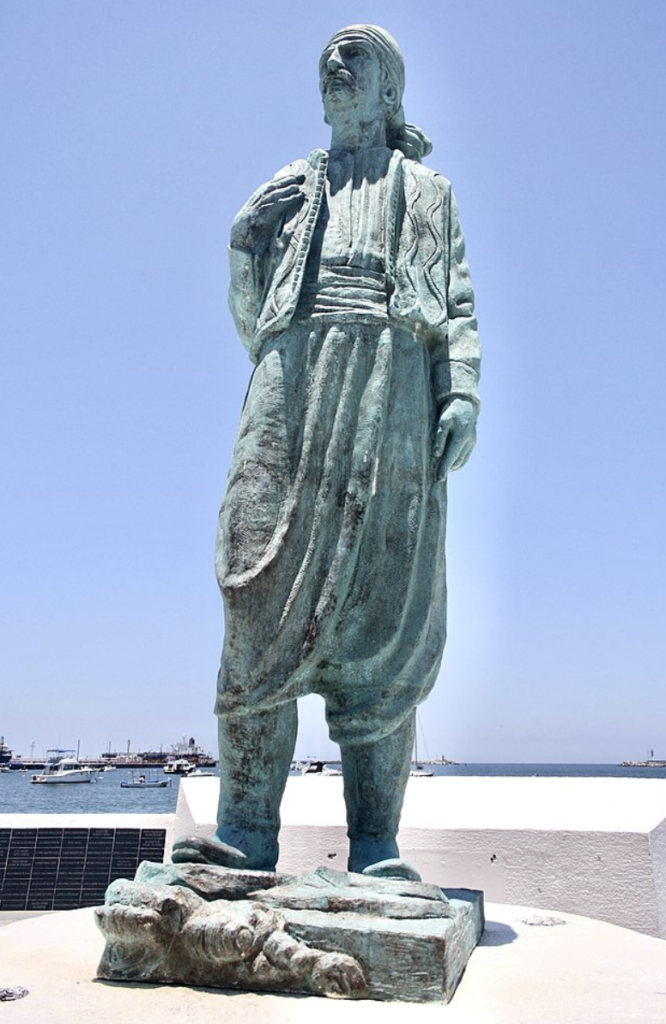How Lebanese Migration Helped Shape Mexico’s Modern Identity

By: Nissrine Bedda / Arab America Contributing Writer
From tacos al pastor to historical monuments symbolizing the Lebanese immigrant experience, Mexico has become home to over 400,000 Lebanese immigrants over more than 200 years—and not by coincidence. The migration of the Lebanese population to Mexico dates back to the early nineteenth century when the Ottoman Empire ruled what was then known as “Mount Lebanon.” While many Lebanese Catholics sought to leave due to religious persecution, others fled in pursuit of economic opportunities and business expansion.
Why Mexico?
When visiting Mexico City or Yucatán, many people find themselves dining at restaurants with kibbeh and “tacos árabes” (“Arabic tacos”) on the menu, leaving them with a simple question: “Why?” In the early 1910s, Mexico’s president, Porfirio Díaz, pursued his version of a revolution, which led to a dictatorship and eventually sparked another revolution. His vision for the nation involved extensive modernization, and migration was vital in expanding various industries to boost Mexico’s economic development, which was in crisis at the time. With Mexico opening its doors to migrants, Lebanese Maronite Catholic families were among those who arrived, contributing to the growth of several sectors, including telecommunications, construction, media, energy, real estate, and mining.
How to Navigate a Society that Doesn’t Speak the Same Language as You?
Adjusting to a new country is challenging for anyone, but what if the country you’re immigrating to doesn’t speak the same language as you? This was a question on the minds of many Lebanese immigrants to Mexico as they embarked on their journey to Latin America. When the first wave of Lebanese migrants arrived in Yucatán, Veracruz, Puebla, and Mexico City between the late 1890s and 1920s, they sold anything they could—shoelaces, belts, thread, and needles. This provided them with opportunities to interact with locals and learn Spanish. The next wave of immigrants followed, arriving to find that their families had already adapted to Mexican society. Many of them received an education and started their businesses.
The Lebanese wave in Mexico was quite distinct from the arrival of migrants from other Latin American countries, as the Lebanese socio-economic drive became apparent to Mexicans almost immediately. The Lebanese community in Mexico quickly acclimated to the Spanish-speaking culture, as the Porfiriato era gave migrants free rein to contribute to the modernization of various sectors. From architectural reconstruction in Mexico City to the expansion of retail sales and real estate, the Lebanese community seized the opportunity to lead these industries while involving Mexican citizens in their business ventures. This collaboration allowed diplomatic relationships to thrive.
The Double-Edged Sword
Part of the Lebanese identity was lost in the transition into Mexican society. Many Lebanese immigrant children have shared their stories, including Carlos Martínez Assad, who discussed this in an interview titled “There are so Many Ways to Tell a Story” where he explains how “ Lebanese immigrants have always insisted on adapting to Mexico as their own country… When Lebanese immigrants arrived, they wanted to blend in. They tried to be indistinguishable from Mexicans,” Assad noted.
There’s a sense of being “neither from here nor there” for Lebanese immigrant children, who may spend their summers back in Lebanon yet struggle to speak Arabic or connect with their families as they’d hoped due to the distinct culture they grew up with in Mexico. While acclimation to Mexican society may have benefited the initial Lebanese immigrant population, was losing part of their culture and identity a disruptive factor for future generations? It’s a double-edged sword.
The Slim Family & their Legacy
The Lebanese community contributes around 50% of the total immigrant input to Mexico’s economy, with many prominent Mexican Lebanese individuals being particularly influential today. One of the most notable figures is Carlos Slim Helú, a Mexican-Lebanese business mogul and investor with a net worth of approximately 86.4 billion USD (as of 2024). Specializing in telecommunications, he built a multinational construction and equipment company that has elevated his family’s name and presence across various influential sectors, including politics and real estate in the nation.
The Slim family has a profound history in the modernization of Mexico, making them an integral part of the nation’s history. Julián Slim Haddad, father of Carlos Slim, immigrated to Mexico in 1902 at fourteen to avoid conscription into the national army. With youthful enthusiasm for a fresh start, he reunited with his four older brothers, who had already immigrated to Tamaulipas, Mexico, in 1898 and made a pact to succeed together. Doña Linda Helú, Carlos Slim’s mother, was born in Chihuahua, Mexico, near the border with San Antonio, Texas, where her family introduced the first Arabic printing press in the country and published the first magazines for the Lebanese community.
Julián Slim prioritized teaching his children the importance of education and financial management. By 12, Carlos Slim had already purchased shares in the Bank of Mexico. His influence continues to shape Mexico today, and his company, Grupo Carso, remains the largest and most crucial conglomerate in Latin America, comprising 268 companies. One of these is Telmex, a well-known telecommunications company that was public before the Mexican government sold it to Carlos Slim in 1990, leading to its privatization.
According to Forbes, Carlos Slim Helú remains the wealthiest man in Mexico. His success story is just one example of the many influential Lebanese Mexican figures in the nation. May the Lebanese community’s impact in Mexico continue to prosper for future generations.
Check out our blog here!








